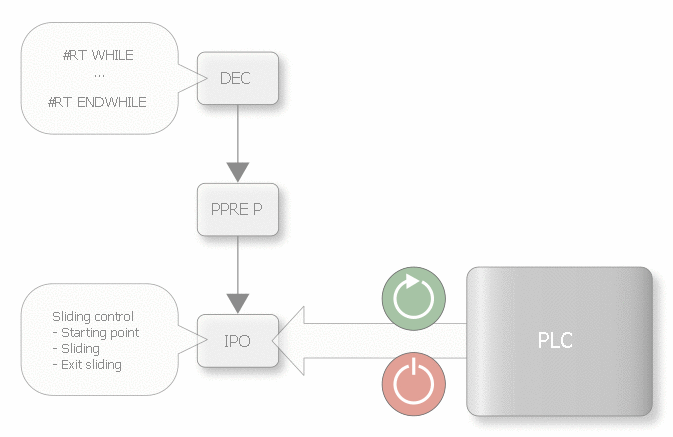Use of real-time loops
Die sinking involves various repetitions of motions and control instructions that take place in the down and orbit channels. In general, these repetitions can be implemented by loops in the NC program. However, this has the following disadvantages:
- Greater system load since the entire NC channel is in use for loops on the decoder plane.
- Loops can only be influenced on the decoder plane to a limited extent. To evaluate loop conditions in real time, it is therefore necessary to synchronise interpolation (real-time) and decoding (non-real-time) (#FLUSH WAIT), but this requires a short interruption in process flow.
The real-time loops function therefore provides a solution. Real-time loops are executed on the interpolation plane using the following syntax:
N010 X100 Y100 ; start position
N100 X50 Y0 ; position at loop entry
N200 #RT WHILE
N210 G02 … ; loop content
N220 G01 …
N290 G01 X50 Y0
N300 #RT ENDWHILE
N400 X100 Y-100 ; end of loop

The use of real-time loops in die sinking provides the following benefits:
- A real-time loop can be used in the down channel during the orbiting phase, e.g. to stop machining immediately during the finishing phase as soon as the required surface finish is achieved. This is not possible with a standard loop since the number of required loop passes is not yet known at the programming stage. See the program example above.
- In certain machining operations, a change of behaviour may be required between the down and the orbing channels during the process. For example, a change between synchronous orbiting (constant velocity independent of the down channel) or star orbiting during machining can be implemented with real-time loops during the process.